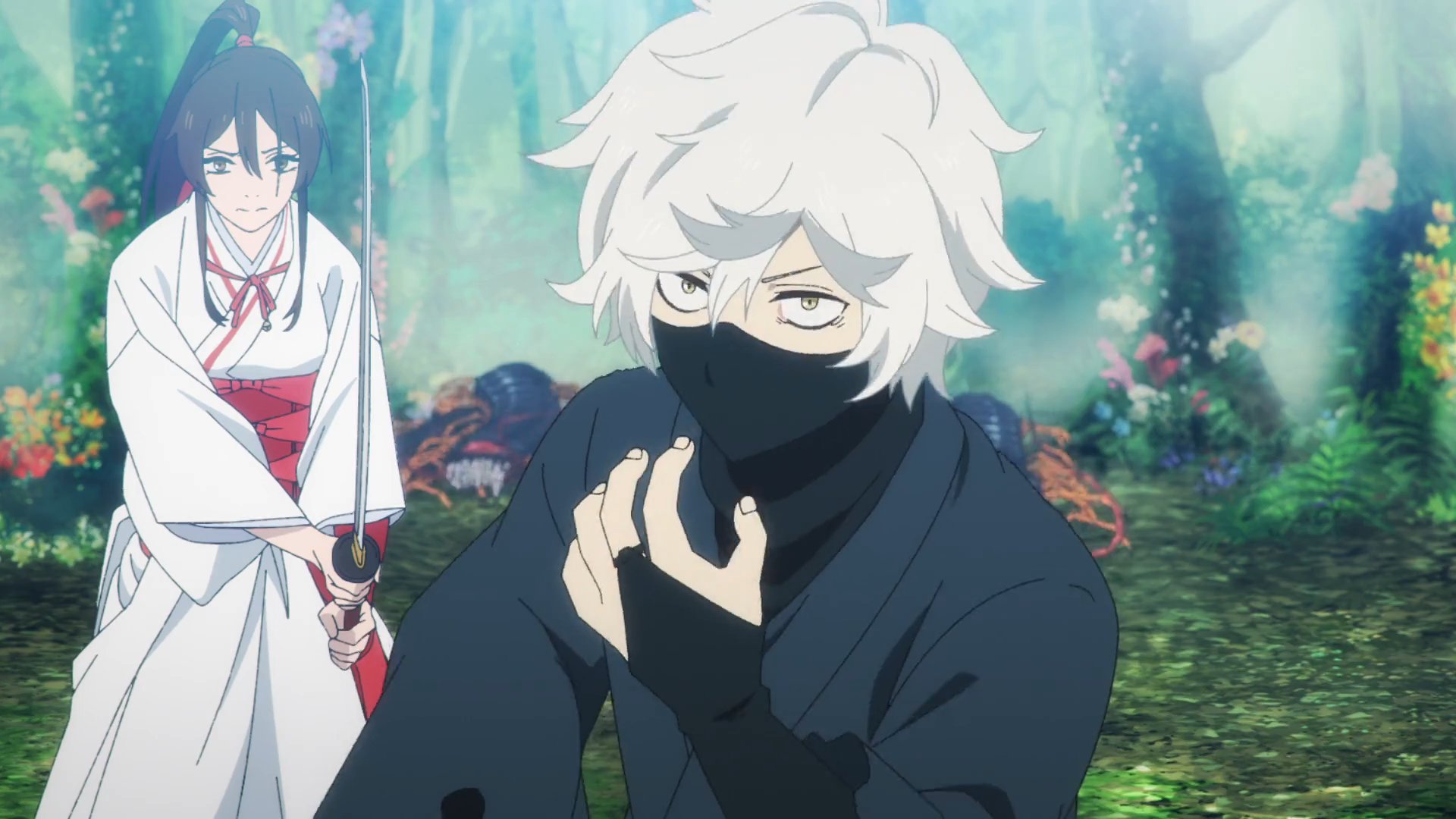Yuji Kaku’s “Hell’s Paradise” bursts onto the scene nailing every element of a successful anime, whether it be its evocative art style or its dark and intriguing, yet heartfelt storytelling. The first thing watchers will notice is the strong premise of the newly produced series. Ten death row convicts are sent to a mysterious island to find an elixir that promises immortality to whoever consumes it and is to deliver it back to Japan to obtain a pardon from the emperor. Each of them is also followed by their respective executioners. The narrative follows one of these criminals, Gabimaru, who wants to come back to Japan for one sole reason: to get back to his wife and live a peaceful life.
Though, alongside the hellish battle royale format with other dangerous and cunning convicts, the setting of the island produces a myriad of unknown creatures, posing as a source of spontaneous threats, allies and conflicts.
What makes “Hell’s Paradise” a must-watch lies in the unpredictability of the story. The narrative seems always to revolve around character progression rather than conflicts and resolutions. With proper execution, the series leaves no stone unturned when establishing the presence of every convict, whether it be giving viewers snippets of their backstories and motivations, or exploring their strengths, unique abilities, or intriguing philosophies. Subsequently, since most characters are given substantial opportunities to shine, the shock that comes after some of their deaths is immense. Furthermore, the journey to finding the elixir is not the priority of all convicts, so the story gives itself the flexibility to force its characters into any situation.
The unpredictability of the narrative also stems from the setting itself. The mysterious island is called Kotaku and is also known as Shinsenkyo. The location is home to grotesque creatures and beautiful, eternal beings that have their motives. These living creatures and beings on the island are revealed to be amalgamations of Buddhist and Taoist entities, linking these religions’ mythologies to potential antagonists and dangers.
At the core of “Hell’s Paradise,” the narrative places an incredible onus on the character of Gabimaru to be the heart of the show and it is done very well. Gabimaru’s past as a ruthless and emotionless mercenary makes him one of the most, if not the most, formidable characters in the story. However, his past is stained with thoughtless killing as Yui teaches him how to be a good-hearted person, correcting him to be kind and feel his emotions. While Gabimaru, as a main character, comes to the narrative with a prepared arsenal of incredible abilities, his Achilles heel is presented in the form of his internal emotional conflicts.
Moving on from the story, the art style and aesthetic of the Shonen series are breathtaking. The direction in which the anime is stylized strikes themes of disturbing, religious inspiration with contrasting vibrant floral backgrounds. And while the line between horror and beauty is blurred, the fear of the mysteries beheld by Shinsekyo is intensely evoked, leading to a distinctly disturbing and unsettling aesthetic. This is especially prominent when the Buddhist and Taoist imagery is fused in the designs of intricate and fantastical creatures such as butterflies with deformed faces, anthropomorphic monsters and centipedes with fingers.
What viewers may also enjoy from the handling of the art is the intertwining of death and beauty. This may come in the form of contrasting the blood from the wounds of the characters with the bright colors of the flora surrounding them. Yet, it also appears in the fusion upon which characters experience death, or a fate much worse, become one with the island, hinting at the disturbing and unsettling nature of the mysterious Shinsekyo.
One may notice that despite the incredible care put into “Hell’s Paradise,” its animation seems lackluster. This raises even greater concern when it is acknowledged that the studio behind the new series is none other than Mappa Studios, responsible for its innovative CGI art in “Chainsaw Man” or the incredibly fluid and stylish “Jujutsu Kaisen.” Fans speculate that the team may be spread thin as they prepare for future projects while still working on this series. Whatever the case, the animation is still solid, however disappointing when the potential at which it is executed is pondered.
Verdict: “Hell’s Paradise” is a must-have on your anime bucket list with its unpredictable storyline, a fleshed-out ensemble of interesting convicts and a wholesome protagonist; with its only weakness being its animation quality potentially limited by its studio.








